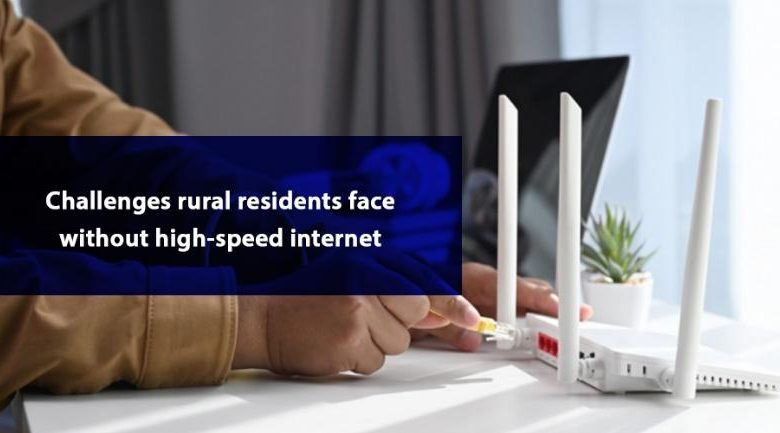Challenges Rural Residents Face without High-Speed Internet

The digital divide in the US refers to the gap in internet services, between residents of rural and urban areas. The ongoing pandemic made us realize how important the internet is for all people. Without internet access over the past 2 years, you would have been unable to work from home or study online. Today, internet services also help you access health benefits from the comfort of your home. You can keep in touch with family over long distances. The thought of living life without the internet seems almost unimaginable today. Unfortunately, this is a reality for many residents in underserved areas.
Why Is the Internet Not Yet Available in Rural Areas?
The terrain of rural areas can pose a major problem if you want to access high-speed internet. In rural areas, hills or trees between your household and your provider can cause a problem. These structures could act as disruptions in the line of sight and disturb your rural internet connection. However, this problem is only limited to wireless connections that use radio waves to deliver internet to your home.
Lakes, forests, and other rough terrains can be hard to deal with when providers try to offer wired internet connections. It takes a lot of effort and resources to deploy cables for internet connections like cable and fiber. Even weather can cause a problem for internet connections, as it interferes with the connections and affects the speeds.
While internet connections like satellite and fixed wireless are available, the speeds are not fast enough for the residents. In addition, faster internet connections are offered using cable and fiber-optic technology, which is not widely available in these underserved areas. One of the reasons for this is that the costs of installing the cables and necessary equipment are very high. In addition, the lower population does not offer providers a high return and gives them no motivation to invest in these areas.
Who Suffers without High-Speed Connections?
Students & Teachers
As of today, the United States is still seeing an average of 2,400 deaths a day due to the spread of the virus. There are still a high number of active cases in the country and the dangers are far from gone. It was during this pandemic that the digital gap between the urban and rural households became apparent.
When the pandemic forced everyone into their homes, students in urban areas faced no issues. Easy access to high-speed connections helped students log into their online classes daily, and download all the necessary resources to continue their education.
Students in rural areas, however, were facing a new problem. Even if they had access to internet connections, the speeds were too slow to be of any help to them. Many students had to resort to visiting their school libraries to access high-speed internet, despite being advised to stay at home.
Teachers in these areas were also facing the same problems. Even with an internet connection, they found that it was not fast enough to upload the resources and videos to the portals. Instead, they would have to spend a large portion of their time traveling to the school, where they could connect to high-speed internet and upload the required content.
This was a problem in many of the rural school districts, where online studies became a major issue. Without a reliable internet connection, parents and teachers were understandably concerned about the students falling behind.
Workers
Without a high-speed connection, many workers would be unable to continue their jobs from the safety of their homes. While the government advised that everyone should remain at home in lockdown, it was not easy to do that.
Not only workers, but businesses have also expressed their concerns with the spotty connections offered in rural areas. Without a connection, individuals in the rural areas would remain unaware of the employment opportunities. Weiler, a manufacturing company, observed that it was hard to get people to come to the rural areas because of the slow internet connections in the area. This indicated that people were unwilling to move to rural areas because the areas were out of touch with the rest of the country.
In Conclusion
Internet access has become a necessity for all Americans. Not offering residents in rural areas a high-speed connection limits them from being able to take advantage of the benefits and ease that the internet offers. While fiber internet may require a large investment, companies should begin to set rural residents up with cable connections that can offer speeds of up to 1000 Mbps.
The government has to take responsibility and ensure that a fast internet connection is made available in underserved areas. It will not only benefit the individuals living in those areas but the country as well. The connectivity will help in economic growth and increase opportunities for individuals in those areas. But to get to this point, the government has to invest in the rural areas, regardless of how expensive the effort may be.
Apart from this, if youw ant to know about The Importance of The Best Ethernet Cables For Gaming then please visit our Software category





